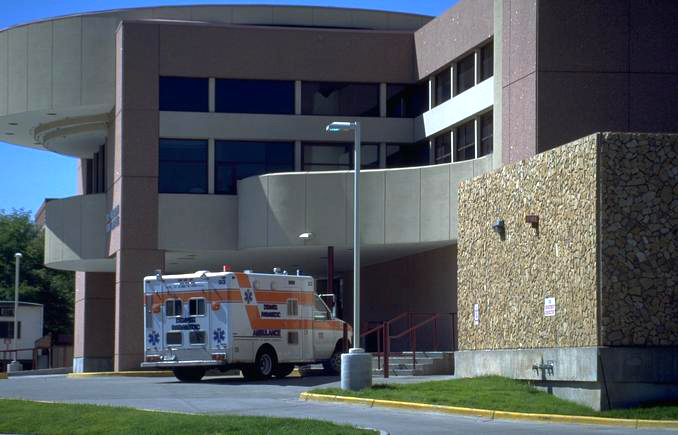
WEDNESDAY, May 14, 2014 (HealthDay News) — Prescription drugs are playing an increasingly larger role in U.S. life, with nearly half of all Americans taking one or more medications.
Among adults, the most common prescription drugs are for cardiovascular disease and high cholesterol.
Those are two of several key findings in the federal government’s annual comprehensive report on the nation’s health that was released Wednesday.
The relationship between Americans and their prescriptions is complex, according to the report produced by the U.S. Centers for Disease Control and Prevention.
On the one hand, more people than ever are receiving effective treatment for chronic conditions like diabetes, high blood pressure, elevated cholesterol levels and depression.
But doctors and pharmacists also find themselves struggling with unintended consequences of drug use, such as prescription narcotics abuse and the advent of antibiotic-resistant germs.
“Isn’t that the case with all forms of medical technology?” said Julia Holmes, chief of the analytic studies branch at the CDC’s National Center for Health Statistics. “It results in great benefit to people who are ill and disabled, but there’s always the potential for inappropriate use.”
The report — titled “Health, United States, 2013” — found the percentage of Americans taking prescription drugs has increased dramatically. During the most recent period, from 2007 to 2010, about 48 percent of people said they were taking a prescription medication, compared with 39 percent in 1988-1994.
Prescription drug use increased with age. About one in four children took one or more prescription drugs in the past month, compared to nine in 10 adults 65 and older, according to the study.
“This is really not earth-shattering news. There’s an increasing number of people with chronic illnesses, and the primary management tool available for dealing with chronic illness is medication,” said William Lang, vice president of policy and advocacy for the American Association of Colleges of Pharmacy.
One in 10 Americans said he or she had taken five or more prescription drugs in the previous month. That raises concerns about potential drug interactions, said Anne Burns, senior vice president for professional affairs at the American Pharmacists Association.
“We know that the number of adverse drug events a patient is likely to experience increases as the number of medications they are taking increases,” Burns said. “You’ve got everything from potential interactions between medications to timing issues taking a variety of medications throughout the day.”
Middle-aged people and seniors are most likely to be on a variety of medications, with 41.7 percent of people aged 45 to 64 and 47.5 percent of people 65 and older saying they had taken five or more drugs in the previous month.
Drugs to manage cholesterol, high blood pressure, heart disease and kidney disease are the most widely used medications among adults, the CDC report found.
In particular, the use of cholesterol-lowering drugs among people 18 to 64 has increased more than sixfold since 1988-1994, due in part to the increased use of statins. Also, nearly 18 percent of adults 18 to 64 took at least one cardiovascular drug during the past month.
The CDC report noted some headway in efforts to combat the development of antibiotic-resistant bacteria. Prescriptions of antibiotics for cold symptoms during routine medical visits declined 39 percent between 1995-1996 and 2009-2010.
But the report also found a tripling of overdose deaths due to prescription narcotics. Painkillers taken among people 15 and older caused 6.6 deaths for every 100,000 people in 2009-2010, compared with 1.9 deaths per 100,000 in 1999-2000.
There has been a fourfold increase in antidepressant use among adults, but Holmes said that’s not necessarily a bad thing.
Seeking help for a mental health disorder isn’t as stigmatized as it once was, she noted. In addition, companies have introduced more effective antidepressants, and researchers have found that antidepressants also can be used to treat panic and anxiety disorders.
“If antidepressants enable people to function fully in their social roles, that’s a good thing,” Holmes said.
Interestingly, even though more people are taking prescription medications, the annual growth in spending on drugs has declined. The CDC reported that spending growth slowed from 14.7 percent in 2001 to 2.9 percent in 2011.
Many popular medications have gone off patent, including cholesterol-controlling statin drugs and other medications used to treat high blood pressure or heart disease, Burns said. Increased use of generic forms of these drugs has helped control spending on medication.
However, she noted that a number of targeted medications to treat conditions such as cancer and rheumatoid arthritis are in the development pipeline. These drugs are expensive and could increase prescription spending in the future.
“There are projections that these specialty drugs are going to take up a large portion of the total prescription drug spending in the future,” Burns said.
Overall, the new report should give researchers, health professionals, advocates and public officials much to chew over in the months to come, Burns said.
“It was very encouraging to see facts we see in isolation consolidated and highlighted in one place,” she said. “I think this will be a very useful resource and a stimulus for continuing the appropriate use of prescription drugs.”
More information
For more on the “Health, United States, 2013” report, visit the U.S. Centers for Disease Control and Prevention.
Copyright © 2025 HealthDay. All rights reserved.

